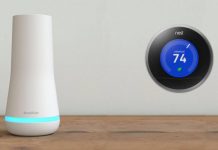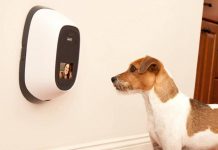UPDATED December 11, 2021 This piece has been updated to reflect the emergence of new technology


Christian Mathews Security Writer
In 1980 it first made an appearance in the automotive industry. Since then, keyless entry systems have been slowly replacing the traditional physical key entry system. However, in recent years, the growth in the use of commercial key fob door entry systems has surged exponentially.
Persistence Market research states that the keyless entry market segment is predicted to grow by 10.2% in the period spanning 2018-2026. This growth rate is expected to increase.
From the impressive numbers, it’s very easy to tell that more people are embracing keyless entry systems more so for commercial uses and it is with good reason.
Keyless entry systems offer more than just security, they offer:
- Convenience
- More control
- Monitoring access
- Better security
There are many other benefits compared to physical key entry systems.
Keep reading to find out more on:
- The many variations of keyless entry systems
- Benefits of keyless entry systems
- The different types of keyless access controls
- Addressing security issues – using layered security with keyless systems
1Keyless vs keys
An audit of your needs and budget is necessary when determining what will work best for you.
Large companies mostly use commercial key fob door entry systems. However, the many benefits that come with them warrant their use by even small companies/businesses.
Some may argue that conventional key entry systems are better than keyless entry systems while still being less costly, you might want to consider these key factors:
Security
Contrary to popular belief, keyless entry systems are more secure than key entry systems.
You can put the speculations on “hacking” keyless entry systems to rest. It is possible since no system is entirely foolproof. However, the chances of cracking most modern keyless entry systems are very minimal.
Security risks are reduced nearly to zero with this additional layered security.
Key entry systems are somehow secure, but the option of adding layered security is almost non-existent making them more vulnerable to intrusion.
Convenience
The convenience of simplicity afforded by keyless entry systems without compromising on security makes it the better of the two.
The ease of granting access, locking or unlocking, and even monitoring access in keyless entry systems can’t be matched by key entry systems.
Budget
Commercial keyless entry systems are more expensive compared to key entry systems.
If budget is a constraint, key entry systems win; otherwise, keyless entry systems win, with the additional benefits justifying the extra cost.
With that, it’s clear that keyless entry systems win for the most part with users.
But are you aware of the variations to keyless entry systems?
Keyless variations
Biometric- these utilize an authorized individual’s unique biometric identity to grant them access. Comes in the form of fingerprint scanners, retina and iris scanners, and even voice recognition systems.
Keypads- to open the door, you’ll need to enter the correct number series/sequence into the keypad. Advanced systems may have the PIN series unique to each individual, with the access privileges varying for each individual.
Key fobs- to access the premises, you’ll need to have the key fob with you. The key fob sends a unique random authentication code to the reader on the door, giving you access.
Smartphone – some keyless entry systems give you the option of using an application on your smartphone to either open or close the door. Additionally, you can also grant someone else access remotely or revoke it.
Some also have the option of monitoring your door or premises through a live video feed.
RFID cards- they work by transmitting data (in this case authentication) to the reader on the door. To open the door, you’ll need to tap the RFID card on the reader on the door.
HAIFUAN Digital Door Lock
2Benefits of keyless entry systems
The edge that keyless entry systems have over key entry systems is mainly on convenience and doing everything else better.
More control to grant/deny access
Unlike traditional key entry systems, you can easily grant or deny certain individuals access. If someone has been laid off, with key entry systems you’d have to replace locks just to ensure they can’t access the premises. Unless of course if you have security guards to screen people or have them return the keys and hope they didn’t make a copy. With keyless entry systems, with the push of a button, you’ll be able to revoke access.
Similarly, with keyless entry systems, you can have certain employees access only specific parts of your business while monitoring your employee’s movements and activities within the premises.
Better security
Keyless entry systems offer better security than the key version. And the reason for this is clear, keyless entry systems offer more in each aspect.
In integrated keyless entry systems, the system can flag suspicious activities such as employees trying to access areas they’re not authorized to be in.
These help with external security threats, as well as internal threats going as far as detecting Carbon monoxide in the premises, fire, or locking down in the case of a security breach. These can’t be done by key entry systems.
If implemented the right way with additional layered security, keyless entry systems are almost completely secure.
Monitoring access
This is where keyless entry systems shine.
The ability to track who’s in your business premises or even the time your employees clocked in all while doing it remotely can’t be matched by key entry systems.
3Adding layered security
Layered security is composed of 3 key aspects:
Administrative – this is in the form of set policies and procedures, i.e. a policy may be in place prohibiting junior members of staff from accessing areas set aside for upper management.
Physical – refers to additional physical safeguards to prevent unauthorized access. This could include a deadbolt lock in addition to the RFID card reader, keypad, or even biometric authentication. Read what is the purpose of physical security safeguards.
Technical – refers to safeguards in the form of software or hardware. They work to counter any threat from cybercrime. As an example, preventing the use of stolen RFID cards or cloned key FOBs on the keyless entry system.
In the context of commercial keyless entry systems, you might have RFID cards or key FOBS to grant access, but there’ll be an additional layer of biometric or keypad authentication.
These serve to act as a failsafe measure. Should one layer of security be compromised there’ll still be another layer to prevent unauthorized access.
4What features should you consider when choosing the best commercial key fob door entry systems?
Security
The keyless entry system should be able to provide basic security such as deterring unauthorized entry. The authentication protocol should be airtight and foolproof.
Aside from basic security, the system should be able to ensure the safety of the building, contents, and occupants. This could be in detecting high levels of harmful gases like carbon monoxide, fire alarms, etc.
The following should also be considered:
- Alarms to trigger tampering of the system
- The system should utilize proprietary software instead of open source. Open source is prone to manipulation/reverse-engineering since it is free in the public domain.
- The system should have a lockdown procedure whenever an intrusion takes place
Administration and auditing
The keyless entry system should be easy to work with for the person in charge. It should be easy to grant or revoke access, while also having the option of monitoring activities and reporting on the activities. Some keyless entry systems store such data for an indefinite period, so you can come to check later on.
It is best if this can be done remotely.
Access control type
At the moment, IP access control systems are the best to work with. Given the ease of installation, you’re not limited to how many doors you can secure. This includes the ease of scaling.
It is best to go for a keyless entry system with IP access control.
However, this is dependent on your business’s needs and budget in place.
The option to add layered security
Additional layered security gives you a failsafe should there be a breach in the system.
Depending on your needs, you might need to keep your premises more secure than the average user. As an example, you may consider additional smart entry locks for your business.
In the case of layered security provided by a smart entry lock system: should someone try infiltrating using a stolen key fob, they may only access the main entrance. But will be stopped when trying to access sensitive information or other secured spaces by the need to confirm their identity using a keypad or biometric reader.
In this case, you should go with a system that has the option to add layered security.

















































